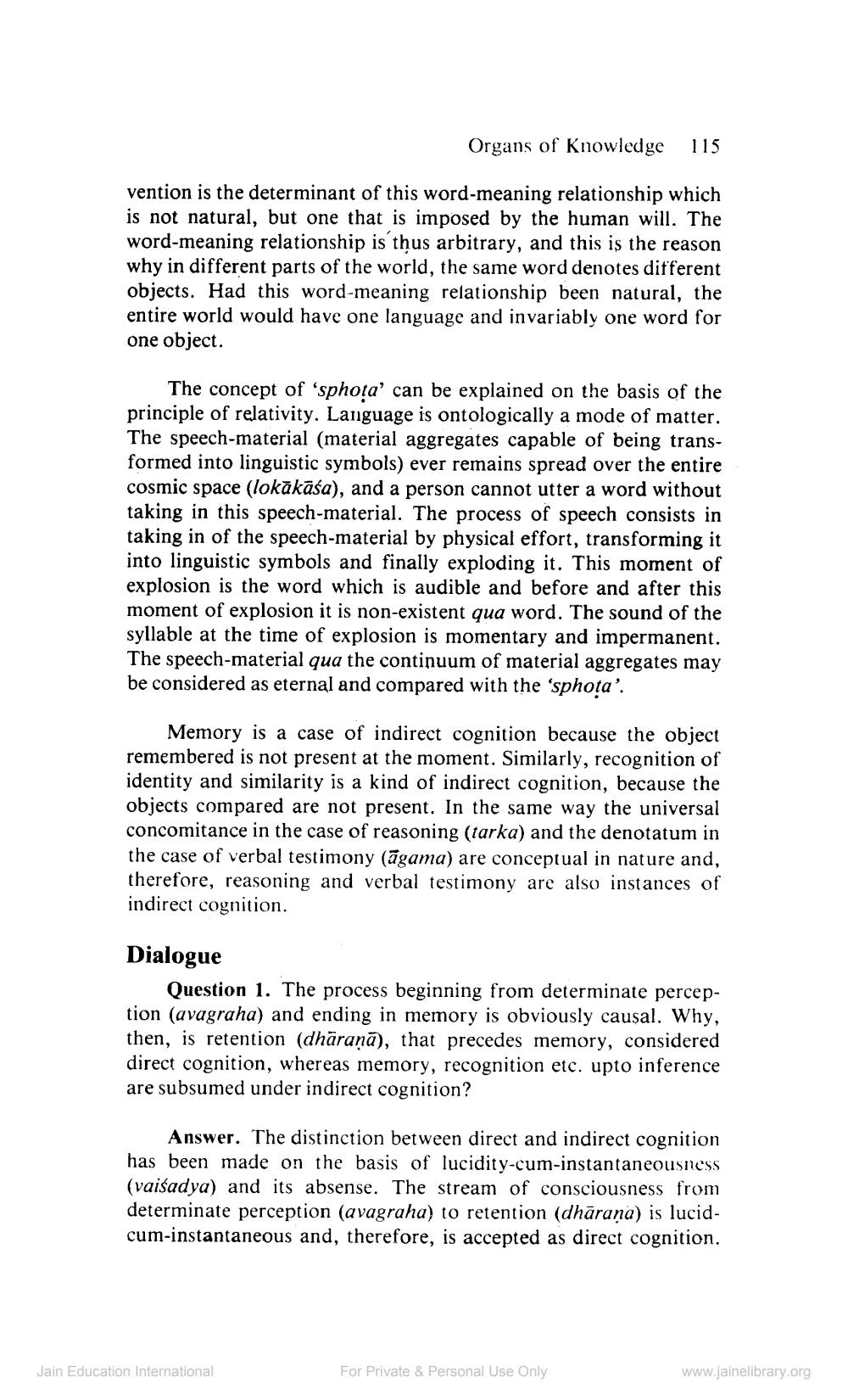________________
Organs of Knowledge 115
vention is the determinant of this word-meaning relationship which is not natural, but one that is imposed by the human will. The word-meaning relationship is thus arbitrary, and this is the reason why in different parts of the world, the same word denotes different objects. Had this word-meaning relationship been natural, the entire world would have one language and invariably one word for one object.
The concept of 'sphota' can be explained on the basis of the principle of relativity. Language is ontologically a mode of matter. The speech-material (material aggregates capable of being transformed into linguistic symbols) ever remains spread over the entire cosmic space (lokākāśa), and a person cannot utter a word without taking in this speech-material. The process of speech consists in taking in of the speech-material by physical effort, transforming it into linguistic symbols and finally exploding it. This moment of explosion is the word which is audible and before and after this moment of explosion it is non-existent qua word. The sound of the syllable at the time of explosion is momentary and impermanent. The speech-material qua the continuum of material aggregates may be considered as eternal and compared with the 'sphota'.
Memory is a case of indirect cognition because the object remembered is not present at the moment. Similarly, recognition of identity and similarity is a kind of indirect cognition, because the objects compared are not present. In the same way the universal concomitance in the case of reasoning (tarka) and the denotatum in the case of verbal testimony (agama) are conceptual in nature and, therefore, reasoning and verbal testimony are also instances of indirect cognition.
Dialogue
Question 1. The process beginning from determinate perception (avagraha) and ending in memory is obviously causal. Why, then, is retention (dhāraṇā), that precedes memory, considered direct cognition, whereas memory, recognition etc. upto inference are subsumed under indirect cognition?
Answer. The distinction between direct and indirect cognition has been made on the basis of lucidity-cum-instantaneousness (vaiśadya) and its absense. The stream of consciousness from determinate perception (avagraha) to retention (dhārana) is lucidcum-instantaneous and, therefore, is accepted as direct cognition.
Jain Education International
For Private & Personal Use Only
www.jainelibrary.org




